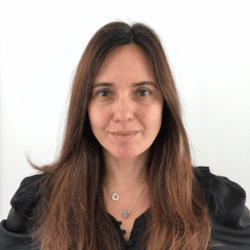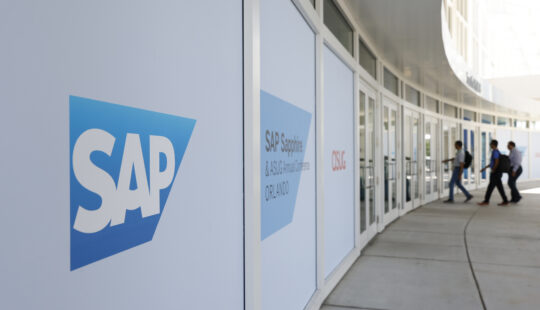
 And just like that, 2022 is over and so is my first year as D&I Lead for SAP in South Europe, Middle East and Africa. While I’ve always been passionate about people-centricity, inclusion, growth and development, Diversity and Inclusion (D&I) was a new area of focus for me, and it’s been an incredible journey so far.
And just like that, 2022 is over and so is my first year as D&I Lead for SAP in South Europe, Middle East and Africa. While I’ve always been passionate about people-centricity, inclusion, growth and development, Diversity and Inclusion (D&I) was a new area of focus for me, and it’s been an incredible journey so far.
This journey has been filled with intense learnings, eye opening moments and I am thankful for the great support which I received by fellow D&I professionals within SAP, and beyond. My first year in this new role have also provided a unique opportunity to reflect; to reflect on my own behaviors and level of understanding on the topic as well as to reflect on challenges and opportunities.
As the positive impact of D&I on businesses has been recognized by more leaders, D&I strategies have become an integral part of organizations of all kinds and more dedicated resources, like me, having been appointed. Whether you are a seasoned or new D&I professional, supporter or not involved in this topic at all but keen to find out more, here are my 5 key reflections.
Reflection 1 – assumptions diminish even the best diversity and inclusion efforts
Unlike most of the other areas of a business, diversity and inclusion, even though owned by dedicated stakeholders within the business, require the support of every single person within an organization. And with D&I being a joint responsibility, it’s critical to acknowledge that not everyone has the same level of understanding and knowledge of the topic.
As D&I professionals we often assume others know what we are talking about and why it is important, but this is not always the case. Good D&I starts from a shared understanding. To avoid confusion and miscommunication, it’s important to always ensure that we are all talking about the same thing and make a conscious effort to foster this shared understanding.
Reflection 2 – D&I lingo: are we really inclusive here?
There is a certain lingo that I quickly started acquiring as I embarked on this new role. And since I’ve been working closely with other D&I professionals, this lingo has been deeply embedded in my vocabulary fairly quickly.
- Bias
- Allyship
- Privilege
- Microaggressions
The list goes on and on…
But not everyone is fluent in the ‘diversity and inclusion lingo’. When using phrases such as “be an ally”, it is good to make sure that everyone is familiar with this term, explain accordingly or simply say “support the interests of others” and introduce the buzzwords and terms slowly. I challenge myself on this every day and invite you to do the same.
Reflection 3 – why inclusion is the real challenge
In our region, SAP South Europe, Middle East and Africa, we are made up of colleagues from over 80 nationalities in over 70 countries, working together across 3 continents. We probably are SAP’s most diverse region and create business value by bringing together our unique differences for joint success.
We are diverse by default across the broader region, however within the over 70 countries, respective communities and most importantly our individual existence, our thoughts and viewpoints, our needs, our pain points vary to a vast extend – and so does the meaning of inclusion.
Diversity and inclusion are two interconnected concepts – but they are not interchangeable. Diversity is about representation or the make-up of an entity. Inclusion is about how well the contributions, presence, and perspectives of different groups of people are valued and integrated into an environment.
An environment consisting of many different genders, generations, races, nationalities, and sexual orientations and identities might be diverse, but when only the perspectives of certain groups are valued or carry any influence, it is not inclusive.
While the wonderful diversity of our region is our superpower, inclusion is the key to further unlock unparalleled success for ourselves and our customers by creating an environment where every single employee can be their authentic self, contribute fully and truly belong.
Reflection 4 – a story is worth 1000 words
There still is a lot of misconception around D&I. Empathy is key to help us understand the needs, challenges, pain points of others, especially of people from underrepresented groups. Stories help to increase our capacity for empathy, understand one another, provide windows into different cultures, backgrounds and viewpoints, and spark reflection.
Beyond simply featuring diverse groups, being truly inclusive means being authentic. This means making sure that when we include various identities, we do so in a way that feels respectful and true, and that allows people of those identities to speak for themselves when possible.
Reflection 5 – it’s okay to not know it all
Remember the last time an executive was asked an uncomfortable question on something D&I related? It happens all the time. And with D&I being a topic that is so personal and highly influenced by one’s beliefs, environment, perspective, values, there often is no right or wrong answer. As much as we expect the “right” answer for us as individuals, we must remain open-minded towards input that might be surprising or not fully in line with our viewpoints.
What matters is authenticity and that includes being vulnerable and acknowledging that, at the core of navigating D&I are learning and a growth mindset, which helps us all to expand our perspectives, challenge our biases and foster our understanding of D&I.
And remember that learning takes a lifetime. I’m excited for the chapter of my D&I learning journey.
Passionate about people-centricity, inclusion, growth and development, Vicky has been with SAP for 26 years. She began her career at SAP Hellas where, over a period of 14 years, she excelled as a consultant and a project manager. Thereafter, she spent 9 years as a Business Manager supporting different areas of the business including the strategic customer segment in EMEA, the South Europe cluster head and the former regional president of the EMEA South region. In 2021, she took on the EMEA South role of Director of Early Talent and Sales Enablement, with responsibility for the regional Sales Academies program, Sales and Leadership Enablement for the region and the 1 Billion Lives initiative. In late 2021, Vicky has been appointed Diversity & Inclusion (D&I) Lead for EMEA South, along with her responsibilities as head of EMEA South Culture Accelerator Office. Under Vicky’s leadership her team is aspiring to build and accelerate a culture of inclusion and excellence in the region, bringing together four strategic programs, all focused on driving a purposeful cultural shift in one of SAP’s most diverse regions.



